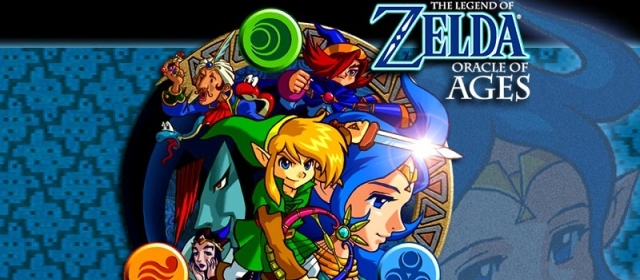For the Big Three, farming out much-loved gaming series to third party developers is a very common practise these days, and while there are always fans that moan and whine about outsiders touching beloved intellectual properties, we certainly aren’t going to complain when the likes of Ninja Theory are banging out corkers like DmC. Things haven’t always worked out in such a rosy fashion, however. Travellers Tales had a shocker when they shoehorned SEGA emblem Sonic into an excruciating isometric adventure. Even worse, during the transitional, pre-PlayStation 1993-4 period, Nintendo allowed Animation Magic and Viridis to get their mitts on one of their crown jewels, resulting in the much-maligned trio of CGI-laden Phillips CD-I Legend of Zelda games.
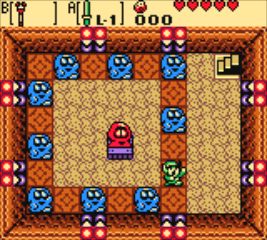 Removing the truly, truly awful top-down Zelda’s Adventure from the equation, the Faces of Evil/Wand of Gamelon double header were two of the best games for the ill-fated console. Judged on their own merits as platform games of that era (which they invariably aren’t), this duo of vaguely Link-related titles are far from being bad videogames. But as entries in a franchise yet to have a truly bum instalment, they were just all kinds of wrong. The inclusion of ludicrous live action sequences, odd Russian-made animated cutscenes, renamed in-game currency (not RUBIES; RUPEES, dammit!) and backgrounds that seemed entirely at odds with the larger Zelda-verse were just some of the problems that befell the games, yet it was the inclusion of speech – thus breaking the cardinal Tom & Jerry rule that Link should never open his gob and speak – that really told the fanbase that the developers didn’t understand the essence of the series.
Removing the truly, truly awful top-down Zelda’s Adventure from the equation, the Faces of Evil/Wand of Gamelon double header were two of the best games for the ill-fated console. Judged on their own merits as platform games of that era (which they invariably aren’t), this duo of vaguely Link-related titles are far from being bad videogames. But as entries in a franchise yet to have a truly bum instalment, they were just all kinds of wrong. The inclusion of ludicrous live action sequences, odd Russian-made animated cutscenes, renamed in-game currency (not RUBIES; RUPEES, dammit!) and backgrounds that seemed entirely at odds with the larger Zelda-verse were just some of the problems that befell the games, yet it was the inclusion of speech – thus breaking the cardinal Tom & Jerry rule that Link should never open his gob and speak – that really told the fanbase that the developers didn’t understand the essence of the series.
Thankfully, by the time Nintendo allowed another developer – namely Capcom – to get their hands on the Master Sword, their intentions were more focused on what makes a Zelda game great, rather than fancy graphical tricks. Hidemaro Fujibayashi has a flawless record with the green tunic – Minish Cap, Four Swords, and the Wii masterpiece Skyward Sword have all been directed by the former Capcom man. Whilst still at Capsule, he cut his Nintendo teeth with the astonishing Oracle of Ages/Oracle of Seasons titles for the Game Boy Color. They may not get as much love as their SNES or N64 forebears, but what Capcom created were two extremely clever, highly sophisticated games that, whilst using an identical engine and sharing certain elements, are both completely unique and far from a pair of re-skinned cash-ins. Originally mooted as being a GBC remake of the original NES Legend of Zelda, ala Super Mario Bros Deluxe, what we ended up with was a stunning double whammy of intertwined adventures. As if we didn’t have enough handheld goodness to attend to, Nintendo have now taken the cruel and time-sapping decision to bring both titles to the Virtual Console service, giving a whole new lease of life to a foray into Link’s past that many may have missed the first time around.
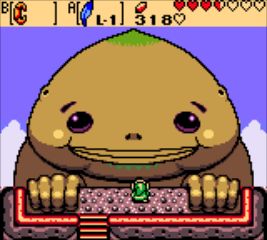 Using the same aerial viewpoint and taking many design cues from A Link To The Past, the two games each place Link in a familiar dilemma – you know the score by now: something, something, defeat the eight dungeons, get the girl, right? Each title occupies its own alternative reality and follows a fairly standard Zelda course. Seasons follows Link’s adventure in the land of Holodrum as he strives to rescue Din, the titular Oracle, from the clutches of the repulsive Onox. Ages is set in Labrynna, with the equally odious Veran having Oracle-napped Nayru. And there must be a gimmick too. A Link to the Past had the Dark World, and Ocarina had the, erm, Ocarina. This time around however, both Oracles manage to introduce their own game-changing object, which along with the classic Zelda drip-feed of bombs, boomerangs and bows help you to access new areas by changing the very fabric of time, or the time of year.
Using the same aerial viewpoint and taking many design cues from A Link To The Past, the two games each place Link in a familiar dilemma – you know the score by now: something, something, defeat the eight dungeons, get the girl, right? Each title occupies its own alternative reality and follows a fairly standard Zelda course. Seasons follows Link’s adventure in the land of Holodrum as he strives to rescue Din, the titular Oracle, from the clutches of the repulsive Onox. Ages is set in Labrynna, with the equally odious Veran having Oracle-napped Nayru. And there must be a gimmick too. A Link to the Past had the Dark World, and Ocarina had the, erm, Ocarina. This time around however, both Oracles manage to introduce their own game-changing object, which along with the classic Zelda drip-feed of bombs, boomerangs and bows help you to access new areas by changing the very fabric of time, or the time of year.
The Rod of Seasons is employed to literally change the season – the further you progress, the more seasons are added to the device, meaning that once you are up to the full complement of four you can access the entire world map by using the unique weather conditions and seasonal changes. During winter, watery areas become ice that you can walk upon – whilst particular seasons affect the flora and fauna to your advantage, such as flowers that can be used as a catapult device when in bloom, or vines that hep you to scale walls when they are fully grown. The Harp of Ages is a musical instrument that, like the Ocarina, enables Link to travel backwards and forwards between two very different time periods, with your actions in the past having a direct bearing on the future. The plant theme inherent in both titles also stretches to the genius use of Seeds, colour-coded and each having a profoundly different use (Ember seeds are used to set fires, Scent seeds are used as a decoy to keep enemies at bay). It is a lot of fun using the five different Seeds – and the Seed Shooter – not only to progress through your core quests, but also to uncover hidden secrets (hint: set fire to lots of trees). Rings are another neat idea introduced to the series here – they act as statistical enhancements, such as increasing your attack power, once found and appraised at the jewellers shop.
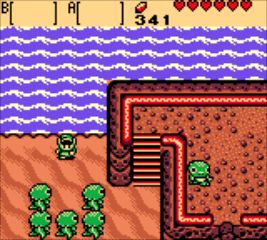 Design is admirably tight throughout both virtual cartridges – with some very entertaining and highly challenging dungeons totalling well into double figures, and a plethora of NPCs to interact with, many of whom have fetch-the-item subquests, minigames or even just some well-written banter. This is without even touching upon the other standard Zelda tropes and familiar faces that are present here, like finding Heart Pieces, hanging out with Tingle, spooktacular Poes in the graveyard, Fairy Fountains, or the other new mechanic – the use of friendly animals that you can employ to assist you in your quest. The two quests are absolutely huge considering the format, with the two time periods, multiple seasons (and in the case of Seasons the underground land of Subrosia) creating four sizeable maps to explore. Although it doesn’t really matter a jot which order you tackle them, it is fair to say that Ages is the more mind-bending of the two, puzzle-wise, with Seasons providing more straight-up, easier-to-follow action.
Design is admirably tight throughout both virtual cartridges – with some very entertaining and highly challenging dungeons totalling well into double figures, and a plethora of NPCs to interact with, many of whom have fetch-the-item subquests, minigames or even just some well-written banter. This is without even touching upon the other standard Zelda tropes and familiar faces that are present here, like finding Heart Pieces, hanging out with Tingle, spooktacular Poes in the graveyard, Fairy Fountains, or the other new mechanic – the use of friendly animals that you can employ to assist you in your quest. The two quests are absolutely huge considering the format, with the two time periods, multiple seasons (and in the case of Seasons the underground land of Subrosia) creating four sizeable maps to explore. Although it doesn’t really matter a jot which order you tackle them, it is fair to say that Ages is the more mind-bending of the two, puzzle-wise, with Seasons providing more straight-up, easier-to-follow action.
Given the fact that the Game Boy Colour palette is limited in what it can display, the art style is vibrant and varied, with some fine classic Zelda character design thrown in. There are even some nice little manga-y cutscenes, which were a first for the series on a Nintendo handheld. Sound is not the strongest part of the package, however, with some of the endless bit-tune compositions and sound effects having the unfortunate effect of grating a little. Nintendo haven’t really fundamentally messed around with the games in any way; although there are restore points and the ability to take notes, there is no stereoscopic 3D, nor are there any changes to the control method. This means that you access your inventory via the START menu, which can be a bit of a jarring pain in the behind, and there are only two face buttons to map things to, just like the console it was originally intended for. Could a more user-friendly layout or touch screen interface have been added? Maybe.
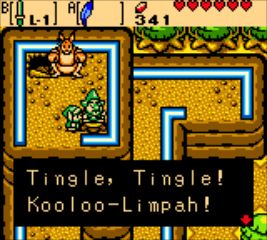 Sonic annoyances and old-school control methods aside, there is so much to love about the Oracle dual ouevre – nowt more than the genius fashion in which the pair are intrinsically tied together. Once you beat one of the duo, you receive a completely unique code based upon some of the choices you make within your first quest, which can be input when you play the second game, unlocking additional quests, item upgrades, story details and a final boss encounter. It is certainly worth going down this route, and ample reason to purchase both titles to get the full Oracle experience.
Sonic annoyances and old-school control methods aside, there is so much to love about the Oracle dual ouevre – nowt more than the genius fashion in which the pair are intrinsically tied together. Once you beat one of the duo, you receive a completely unique code based upon some of the choices you make within your first quest, which can be input when you play the second game, unlocking additional quests, item upgrades, story details and a final boss encounter. It is certainly worth going down this route, and ample reason to purchase both titles to get the full Oracle experience.
VERDICT: There is nothing like the warm, cuddly familiarity of settling down with a good Zelda title, something that Capcom obviously took onboard when crafting these stunning titles, that constituted the finest the GBC had to offer and now provide the best way to spend your cash in the Virtual Console. With a genuinely innovative link-up system, a mixed array of typically cool in-game tools and objects to learn how to use, and near-flawless game design, it is amazing to think that this is the first re-emergence of the Oracle side-story for twelve years.

SUPERB. This is the mark of greatness, only awarded to games that engage us from start to finish. Titles that score 9/10 will have very few problems or negative issues, and will deliver high quality and value for money across all aspects of their design.


